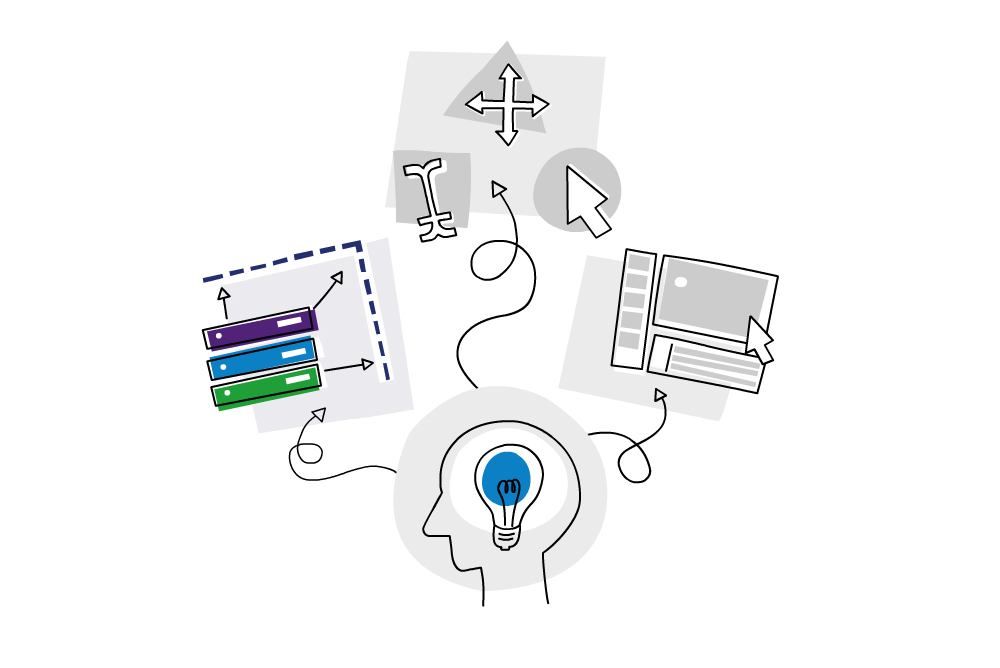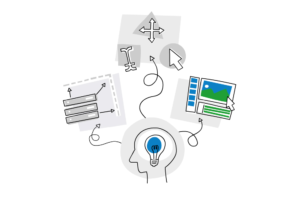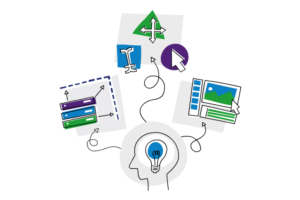
Instructional Design in eLearning
When learners open an eLearning course, the visuals may capture their attention first, but it’s the instructional design that determines whether they walk away having learned something useful.
Instructional design is the blueprint of eLearning. It’s about structuring content in a way that makes knowledge stick, skills transfer, and behaviour change possible. At B Online Learning, we consider instructional design to be one of the three essential elements of eLearning, alongside visual design and functional design, that ensure learning solutions are intuitive, scalable, and adaptable.
This post explores what instructional design really means in eLearning, how to structure content effectively, and which Articulate tools (Rise 360 and Storyline 360) are best suited for bringing these principles to life.
Why Instructional Design Matters
Instructional design isn’t about filling slides with information or making courses longer. It’s about helping learners achieve outcomes in the most effective way possible.
Done well, instructional design ensures:
- Clarity: Learners know exactly what they’re meant to achieve.
- Flow: Content moves logically, building on itself step by step.
- Engagement: Learners aren’t passive; they’re actively doing, reflecting, and applying.
- Relevance: Content connects to learners’ real work and challenges.
Without solid instructional design, even the most beautiful eLearning or advanced LMS won’t deliver results.
Defining Learning Outcomes
Every eLearning project should begin with the question: “What do we want learners to know, feel, or do differently after this course?”
Tips for Crafting Learning Outcomes
- Keep them specific and measurable: e.g., “Identify three signs of phishing emails.”
- Focus on action verbs: apply, demonstrate, analyse, create.
- Avoid vague terms: understand, know, be aware of.
Clear outcomes don’t just guide learners — they also help stakeholders agree on scope and prevent scope creep later in development.
Structuring Content for Flow
Once outcomes are clear, the next step is structuring the content.
Three Core Techniques
- Chunking: Break down content into smaller, digestible sections. Learners process short bursts of information more effectively than long lectures.
- Scaffolding: Start with the basics and gradually build towards more complex ideas. Each section should prepare learners for the next.
- Application: Include opportunities for learners to use knowledge — through practice activities, scenarios, or reflection points.
Articulate Rise vs Storyline for Structure
- Rise 360: Naturally supports chunking and flow with its clean, modular design. Perfect for linear learning paths, policies, or structured knowledge.
- Storyline 360: Allows you to build complex, branching flows where learners explore different paths depending on their choices. Ideal for simulations or decision-making practice.
Making Content Engaging and Interactive
Instructional design isn’t just about what you present, it’s also about what learners do.
Engagement Strategies
- Knowledge checks: Short quizzes or matching activities to reinforce key points.
- Scenarios: Real-world decision-making activities where learners experience consequences.
- Reflection prompts: Encourage learners to think about how content applies to their own context.
- Gamification elements: Points, badges, or progress bars can increase motivation.
Tools for Interactivity
- Rise 360 includes built-in interactive blocks like labelled graphics, sorting activities, and simple knowledge checks.
- Storyline 360 enables custom interactions like drag-and-drop activities, branching scenarios, and simulations.
By combining the two, you can create courses that are structured and dynamic.
The Role of Storyboarding
Storyboarding is often considered a non-negotiable step in eLearning development, but the truth is, it depends on the type of project and the tool you’re using.
When Storyboarding Adds Value
For complex projects, especially those built in Storyline 360 or when producing animated videos, a storyboard is essential. It allows the instructional designer, subject matter experts, and stakeholders to align on:
- The learning flow.
- The type of interaction or animation on each screen.
- Branching logic and decision points.
This upfront planning saves time in development and avoids costly rework.
When Storyboarding Isn’t Necessary
One of the beauties of Rise 360 is its simplicity and structure. For projects like converting procedures, compliance updates, or microlearning, an experienced designer often doesn’t need to storyboard first. Instead, they can work directly from the source document, shaping content blocks and interactions as they build.
In these cases, the design process is more fluid, the course evolves directly within Rise as the designer selects the most effective way to present each piece of content. This approach is faster, more intuitive, and perfectly suited for projects where speed and clarity matter most.
Instructional Design in Action: An Example
Imagine you’re building a course on cybersecurity awareness.
1. Learning outcomes:
- Recognise signs of phishing emails.
- Apply password best practices.
- Report suspicious activity.
2. Structure:
- Begin with a short overview (Rise).
- Follow with interactive examples of phishing emails learners must identify (Storyline block).
- Add a scenario where learners decide how to respond to a suspicious message (Storyline branching).
- Conclude with a checklist learners can download and use at work (Rise).
3. Engagement:
- Knowledge check quizzes.
- Reflection prompts: “Think about a time you received a suspicious email at work — what did you do?”
This layered instructional design ensures the course isn’t just informational but practical and actionable.
Common Pitfalls to Avoid
Even experienced instructional designers sometimes fall into traps. Here are a few to watch for:
- Content overload: Trying to include everything at once. Less is more.
- One-size-fits-all learning: Failing to consider different roles, skill levels, or prior knowledge.
- Activity for activity’s sake: Interactions should support learning outcomes, not exist as “bells and whistles.”
- Neglecting assessment: If you don’t measure, you don’t know if learning happened.
Instructional Design and Measurement
Instructional design doesn’t stop when the course is published. Measuring impact is part of the process.
- Quizzes and knowledge checks: Assess comprehension.
- Surveys: Capture learner feedback.
- LMS data: Track completions, time spent, or branching choices.
- On-the-job outcomes: Did behaviour change? Are errors reduced?
By closing the loop, instructional design moves from theory into tangible business impact.
Choosing the Right Tool for Instructional Design
The choice between Rise and Storyline depends on your instructional goals:
- Rise 360: Best for structured knowledge transfer and simple interactivity.
- Storyline 360: Best for complex scenarios, simulations, or role-play activities.
- Together: Use Rise for framework and Storyline for deeper engagement.
At B Online Learning, we often blend the two – delivering a sleek, structured Rise course that embeds Storyline blocks where richer instructional moments are needed.
Final Thoughts: Instructional Design as the Blueprint
Instructional design is where eLearning begins. It’s the foundation that ensures knowledge is transferred effectively, aligned with learner needs, and linked to organisational goals.
When you define clear outcomes, structure content logically, and engage learners through practice and reflection, your courses move beyond “tick-the-box” training to create meaningful behaviour change. Explore our Learning Design, Reinvented, our in depth series on instructional design.
At B Online Learning, we specialise in helping organisations build this foundation, whether through Certified Articulate training or developing award-winning courses. If you’re ready to strengthen your instructional design, connect with us today.
Source link



